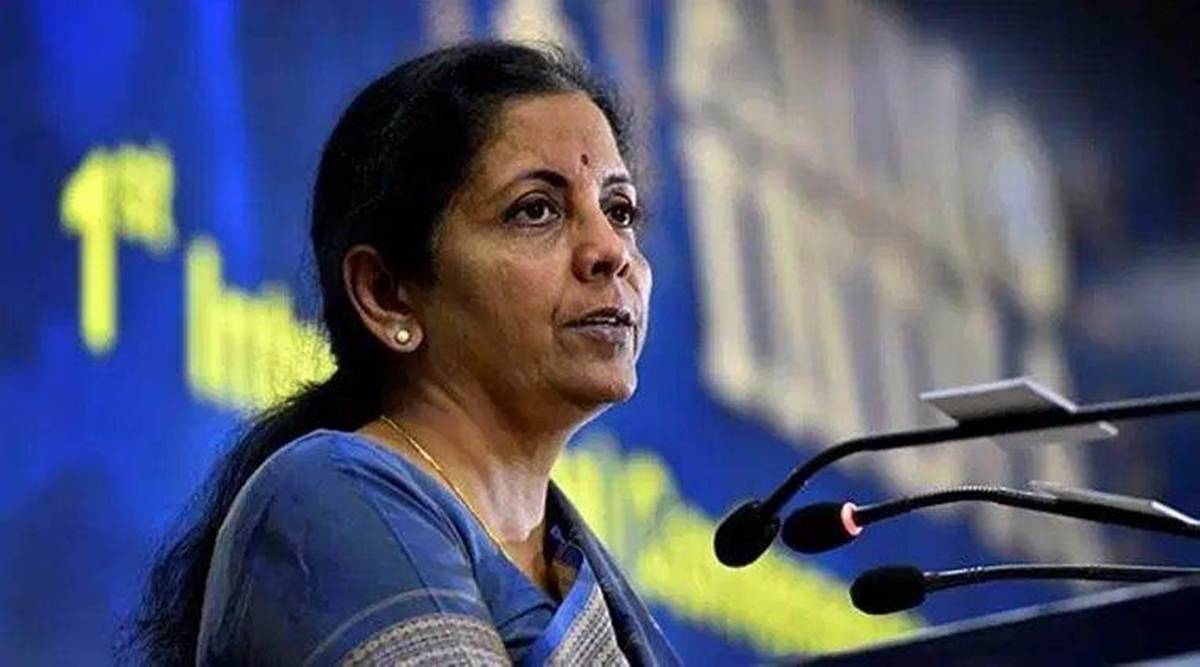 Union Finance Minister Nirmala Sitharaman (File Photo)
Union Finance Minister Nirmala Sitharaman (File Photo) IN OVERTURNING an order re-setting interest rates on small savings schemes issued Wednesday evening within about 12 hours, Union Finance Minister Nirmala Sitharaman set aside a process that was put in place five years ago, in 2016, by the NDA government itself.
While the ‘Office Memorandum’ regarding revision of rates issued by the Budget Division in the Department of Economic Affairs was uploaded on the finance ministry website on Wednesday evening, Sitharaman tweeted at 7.54 am, Thursday, that the “orders issued by oversight shall be withdrawn”.
The Ministry had on Wednesday cut interest rates on various small savings schemes sharply by 40-110 basis points.
The revised rates were to come into effect from April 1 and remain valid till June 30.
Sources in the finance ministry said the decision to prune rates was taken after a due process and detailed discussions involving top officials within the Budget Division of the Department of Economic Affairs.
“It’s been seen internally as a wrong decision. Apparently, the decision was finalised at the bureaucracy level and then escalated higher up for approval, but the bureaucrats involved did not think of the political implications. By morning, it was decided at the highest level in the government that the decision needs to be reversed,” the official said. Four states and one Union Territory are in the midst of Assembly elections, and the timing of the rate cut was seen as counter productive.
Interest rates of small savings schemes of GoI shall continue to be at the rates which existed in the last quarter of 2020-2021, ie, rates that prevailed as of March 2021.
Orders issued by oversight shall be withdrawn. @FinMinIndia @PIB_India— Nirmala Sitharaman (@nsitharaman) April 1, 2021
A former senior bureaucrat in the Finance Ministry said the process follows a February 2016 order of the Budget division clearly explaining the quarter reset cycle, how these are to be determined based on yields on government securities of comparable maturity, and any spread to be given over and above these rates. “This well laid down process, which was put in place in 2016 after extensive consultations over the years, leaves limited scope for any ‘oversight’ to creep in while issuing the order,” he said.
The rates on small savings schemes were on hold for the past three quarters since their last revision for the April-June quarter in 2020.
“The file on quarterly reset of interest rates on small savings moves from Deputy Director to Director, Budget, then Joint Secretary or Additional Secretary Budget and Department of Economic Affairs Secretary. The rates are thus decided within the Budget division, usually with the prior knowledge of the Finance Minister,” a senior government official said, explaining the process.
While the decision to change rates is usually taken with the knowledge of the Finance Minister, sources said this time the message from the Finance Minister’s Office to hold the decision on rates could not be communicated effectively to the officials.
Sources with knowledge of the development said prior to rate revision, the Finance Minister’s Office had sought more data on women depositors in the overall volume of savers under all schemes and a report on Sukanya Samridhi Yojana. “The message from FMO to hold the file pending such data could not be percolated down properly and the OM (office memorandum) was issued around 8 PM (Wednesday) in the rush of the last day of the fiscal year,” they said.
As the yields on Central government borrowings are now nearly 100 basis points lower than the prevalent rates on small savings, the Budget division officials went ahead and aligned these with the market rates in line with the 2016 circular on this subject. The Budget division’s action is justified since lower rates helps cut borrowing cost given substantial Central government borrowing through small savings.
“The small savings interest rates are perceived to limit the banking sector’s ability to lower deposit rates in response to the monetary policy of the Reserve Bank of India. In the context of easing the transmission of the lower interest rates in the economy, the government also has to take a comprehensive view on the social goals of certain National Small Savings Schemes,” as per the finance ministry statement on February 16, 2016, which overhauled the rate setting process.
The reduction in small savings rates, which is now being rolled back, also came at a time when inflation has inched up in recent months. Latest retail inflation data showed the headline number rising to a three-month high of 5.03 per cent in February from a 16-month low of 4.06 per cent in January. This would have meant that some of the small savings products may not yield much in terms of real interest rates, after adjusting for inflation.
“There are a multitude of issues here. On one side, we have job losses and reduction in incomes due to Covid-19 and inflation is slowly inching up; then where do the savers, especially senior citizens, go. So ultimately policy making is the art of managing trade-offs, and this realisation possibly led to subsequent reversal,” another government official said.
“As realisation dawned that this move could have ramifications, Finance Ministry officers were alerted early morning that it should be widely circulated that the government is not cutting the rates,” he said. None of the officials that The Indian Express spoke with for this report wanted to be named, given the sensitivity of the subject.
- The Indian Express website has been rated GREEN for its credibility and trustworthiness by Newsguard, a global service that rates news sources for their journalistic standards.

